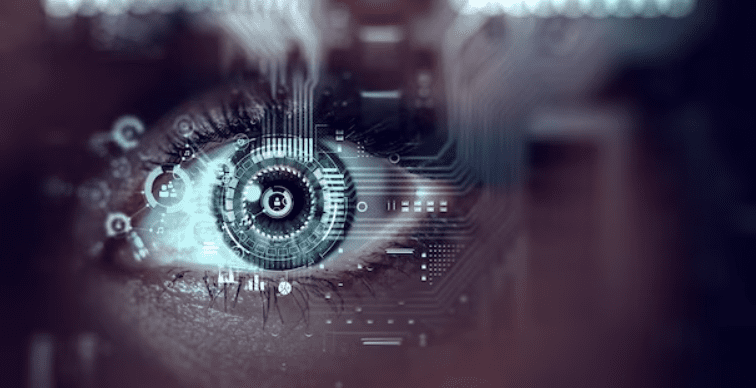Cloud-based Computer Vision: Enabling Scalability and Flexibility
CV APIs are growing in popularity because they let developers build smart apps that read, recognize, and analyze visual data from photos and videos. As a consequence, the CV API market is likely to expand rapidly in the coming years to meet the rising demand for these sophisticated applications across a wide range of sectors.
According to MarketsandMarkets, the computer vision market will grow from $10.9 billion in 2019 to $17.4 billion in 2024, with a compound annual growth rate (CAGR) of 7.8 percent. The market for CV APIs is projected to be worth billions of dollars by 2030, continuing the upward trend seen since 2024.
What is Computer Vision?#

Computer Vision is a branch of artificial intelligence (AI) that aims to offer computers the same visual perception and understanding capabilities as humans. Computer Vision algorithms use machine learning and other cutting-edge methods to analyze and interpret visual input. These algorithms can recognize patterns, recognize features, and find anomalies by learning from large picture and video datasets.
The significance of Computer Vision as an indispensable tool in various industries continues to grow, with its applications continually expanding.
Below given are just a few examples of where computer vision is employed today:
- Automatic inspection in manufacturing applications
- Assisting humans in identification tasks
- Controlling robots
- Detecting events
- Modeling objects and environments
- Navigation
- Medical image processing
- Autonomous vehicles
- Military applications
Benefits of Using Computer Vision in Cloud Computing#

Cloud computing is a common platform utilized for scalable and flexible image and video processing by implementing Computer Vision APIs.
Image and Video Recognition:#
Using cloud-based Computer Vision APIs enables the analysis and recognition of various elements within images and videos, such as objects, faces, emotions, and text.
Augmented Reality:#
The utilization of Computer Vision APIs in augmented reality (AR) applications allows for the detection and tracking of real-world objects, which in turn facilitates the overlaying of virtual content.
Security:#
Computer Vision APIs, such as face recognition and object detection, may be used in security systems to detect and identify potential security risks.
Real-time Analytics:#
Real-time data processing is made possible by cloud-based Computer Vision APIs, resulting in quicker decision-making and an enhanced user experience.
Automated Quality Control:#
The automation of quality control processes and the identification of product defects can be achieved in manufacturing and production settings by utilizing Computer Vision APIs.
Visual Search:#
Visual search capabilities can be facilitated through the application of Computer Vision APIs, allowing for the upload of images to search for products in e-commerce and other related applications.
Natural Language Processing:#
Computer Vision APIs can be utilized alongside natural language processing (NLP) to achieve a more comprehensive understanding of text and images.
Way of Using Computer Vision on the Edge#

Certain conditions must be satisfied before computer vision may be deployed on edge. Computer vision often necessitates an edge device with a GPU or VPU (visual processing unit). Edge devices are often associated with IoT (Internet of Things) devices. However, a computer vision edge device might be any device that can interpret visual input to assess its environment.
The next phase of migration is application configuration. Having the program downloaded directly from the Cloud is the quickest and easiest method.
Once the device has been successfully deployed, it may stop communicating with the Cloud and start analyzing its collected data. The smartphone is an excellent example of a device that satisfies the requirements and is likely already known to most people.
Mobile app developers have been inadvertently developing on the Edge to some extent. Building sophisticated computer vision applications on a smartphone has always been challenging, partly due to the rapid evolution of smartphone hardware.
For instance, in 2021, Qualcomm introduced the Snapdragon 888 5G mobile platform, which will fuel top-of-the-line Android phones. This processor delivers advanced photography features, such as capturing 120 images per second at a resolution of 12 megapixels.
This processor provides advanced photography features, such as capturing 120 images per second at a resolution of 12 megapixels.
An edge device's power enables developers to build complicated apps that can run directly on the smartphone.
Beyond mobile phones, there are more extensive uses for computer vision on Edge. Computer vision at the border is increasingly used in many industries, especially manufacturing. Engineers can monitor the whole process in near real-time due to software deployed at the Edge that allows them to do so.
Real-time examples#
The following is an overview of some of the most well-known Computer Vision APIs and the services they provide:
1. Google Cloud Vision API:#
Images and videos can be recognized, OCR can be read, faces can be identified, and objects can be tracked with the help of Google's Cloud Vision API, a robust Computer Vision API. It has a solid record for accuracy and dependability and provides an easy-to-use application programming interface.
2. Amazon Rekognition:#
Other well-known Computer Vision APIs include Amazon's Rekognition, which can recognize objects, faces, texts, and even famous people. It's renowned for being user-friendly and scalable and works well with other Amazon Web Services.
3. Microsoft Azure Computer Vision API:#
Image and video recognition, optical character recognition, and face recognition are just a few of the capabilities provided by the Microsoft Azure Computer Vision API. It has a stellar history of clarity and speed and supports many languages.
4. IBM Watson Visual Recognition:#
Image recognition, face recognition, and individualized training are only some of the capabilities the IBM Watson Visual Recognition API provides. It may be customized to meet specific needs and works seamlessly with other IBM Watson offerings.
5. Clarifai:#
In addition to custom training and object detection, image and video identification are just some of the popular Computer Vision API capabilities offered by Clarifai. It has a solid record for accuracy and simplicity, including an accessible application programming interface.
Conclusion#
In conclusion, AI's popularity has skyrocketed in the recent past. Companies that have already adopted AI are looking for ways to improve their processes, while those that still need to are likely to do so shortly.
Computer vision, a cutting-edge subfield of artificial intelligence, is more popular than ever and finds widespread application.